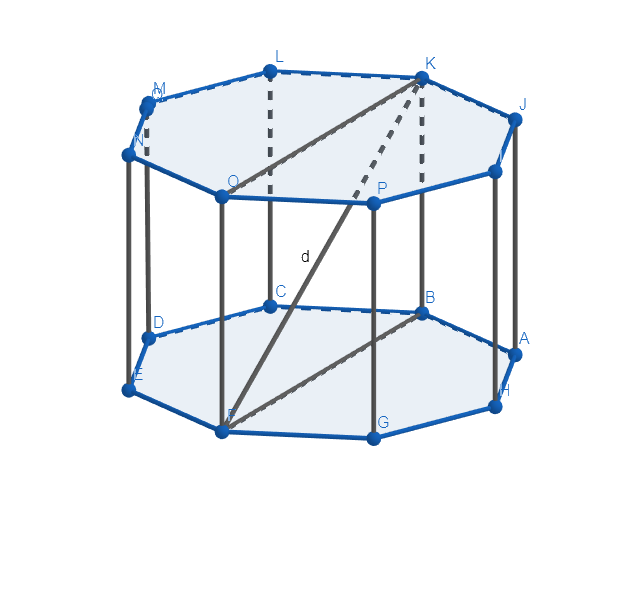Optimization Problem 2

Using a -gonal prism, for each let the area of each base be and the volume .
Find the the sequence that minimizes the distance , then find .
In the above octagonal prism and .
Express the answer to two decimal places.
Note: My intention is to use the -gonal prism and not to use a cylinder. If is the volume of an -gonal prism, then , so you will get the correct result if you use a cylinder. Attempt doing the problem using the -gonal prism.
The answer is 1.49.
This section requires Javascript.
You are seeing this because something didn't load right. We suggest you, (a) try
refreshing the page, (b) enabling javascript if it is disabled on your browser and,
finally, (c)
loading the
non-javascript version of this page
. We're sorry about the hassle.
For area of 4 n − g o n :
Let P Q = x be a side of the n − g o n , P B = Q B = m , A B = h ∗ , and ∠ Q B A = 4 n π .
2 x = m sin ( 4 n π ) ⟹ m = 2 sin ( 4 n π ) x ⟹ h ∗ = 2 x cot ( 4 n π ) ⟹ the area of the 4 n -gon A = n x 2 cot ( 4 n π ) = a ⟹ x = n a tan ( 4 n π ) ⟹ m = 2 1 ( n a ) csc ( 4 n π ) sec ( 4 n π ) .
The volume V = a H = 1 ⟹ H = a 1 ⟹ D ( a ) = d 2 ( a ) = 4 m 2 + H 2 = ( n a ) csc ( 4 n π ) sec ( 4 n π ) + a 2 1 ⟹ d a d D = n a 3 csc ( 4 n π ) sec ( 4 n π ) a 3 − 2 n = 0
a > 0 ⟹ a ( n ) = ( n sin ( 2 n π ) ) 3 1 and d a 2 d 2 D = a 4 6 > 0 for a ( n ) = ( n sin ( 2 n π ) ) 3 1 ⟹ min at a ( n ) = ( n sin ( 2 n π ) ) 3 1 .
D ( n ) = d 2 ( n ) = ( n sin ( 2 n π ) ) 3 2 3 ⟹ d ( n ) = ( n sin ( 2 n π ) ) 3 1 3 .
Let j n = n sin ( 2 n π ) .
Using the inequality: cos ( x ) < x sin ( x ) < 1 ⟹ 2 π cos ( 2 n π ) < j n < 2 π ⟹ lim n → ∞ j n = 2 π ⟹ lim n → ∞ d ( n ) = ( 2 π ) 3 1 3 ≈ 1 . 4 9
To show lim n → ∞ V n = V c y l i n d e r :
Let P Q = x be a side of the n − g o n , P B = Q B = r , A B = h ∗ , and ∠ Q B A = n π .
x = 2 r sin ( n π ) and h ∗ = r cos ( n π ) .
Let H be the height of the prism ⟹ V n = 2 n sin ( n 2 π ) r 2 H .
Using the inequality: cos ( x ) < x sin ( x ) < 1 ⟹ π cos ( n 2 π ) < 2 n sin ( n 2 π ) < π ⟹ lim n → ∞ 2 n sin ( n 2 π ) = π ⟹ lim n → ∞ V n = π r 2 H = V c y l i n d e r .
Doing the problem using a cylinder:
π r 2 = a ⟹ r = π a and the volume V = a h = 1 ⟹ h = a 1 ⟹
D ( a ) = d 2 ( a ) = 4 r 2 + h 2 = π 4 a + a 2 1 ⟹ d a d D = a 3 π 2 ( 2 a 3 − π ) = 0 ⟹ a = ( 2 π ) 3 1
d a 2 d 2 D = a 4 6 > 0 for a = ( 2 π ) 3 1 ⟹ min at a = ( 2 π ) 3 1 and d = ( 2 π ) 3 1 3 ≈ 1 . 4 9